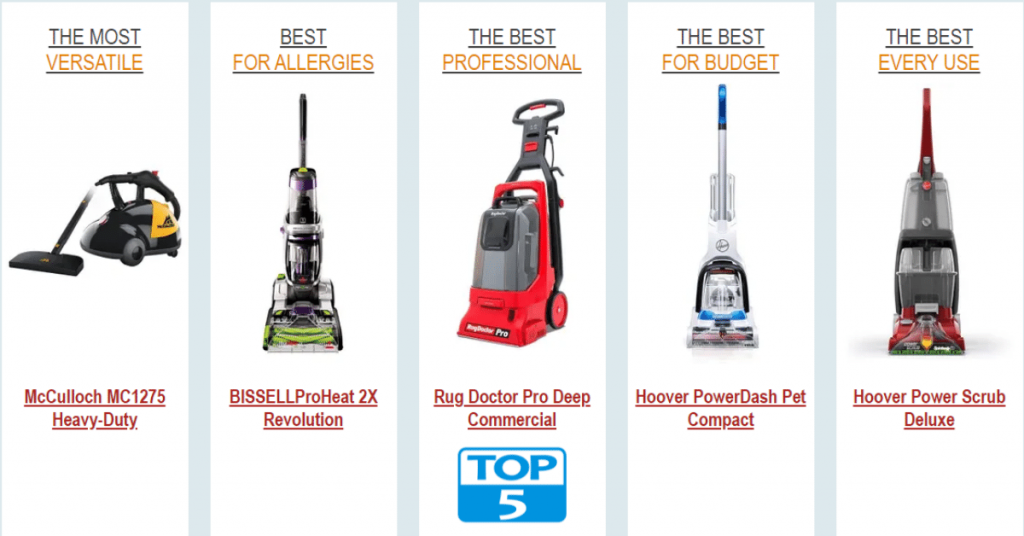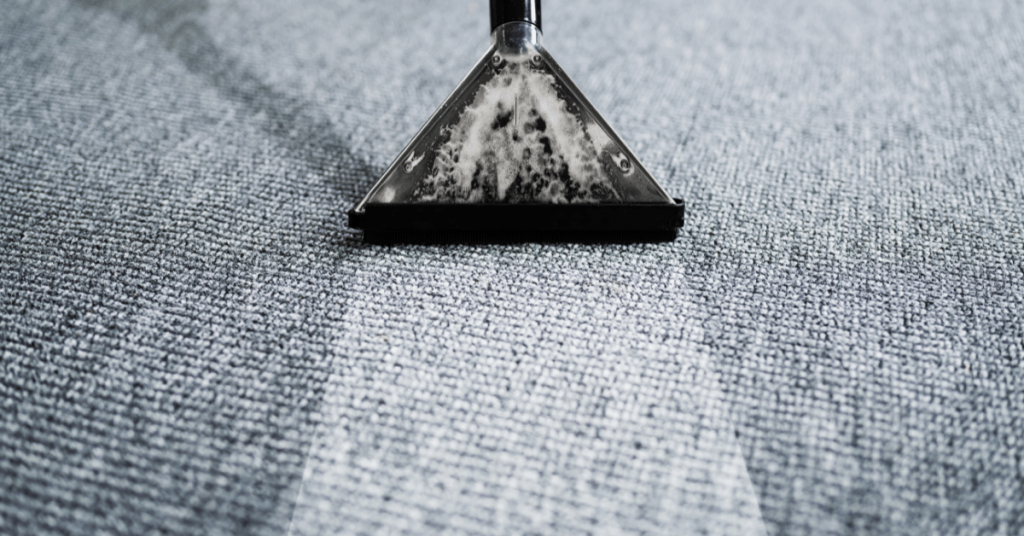I am certain that you must have become obsessed with cleanliness after the onset of the COVID-19 pandemic. I totally get it and can relate! Even I feel tempted to mop my house with bleach every other day. But is this really a good idea?
To deep clean your floor, you may be thinking that bleach is a one stop solution.
But…
Bleach is not recommended for cleaning floors because it can damage the finish and penetrate into the porous fibers, causing discoloration and compromising the floorboards’ structure.
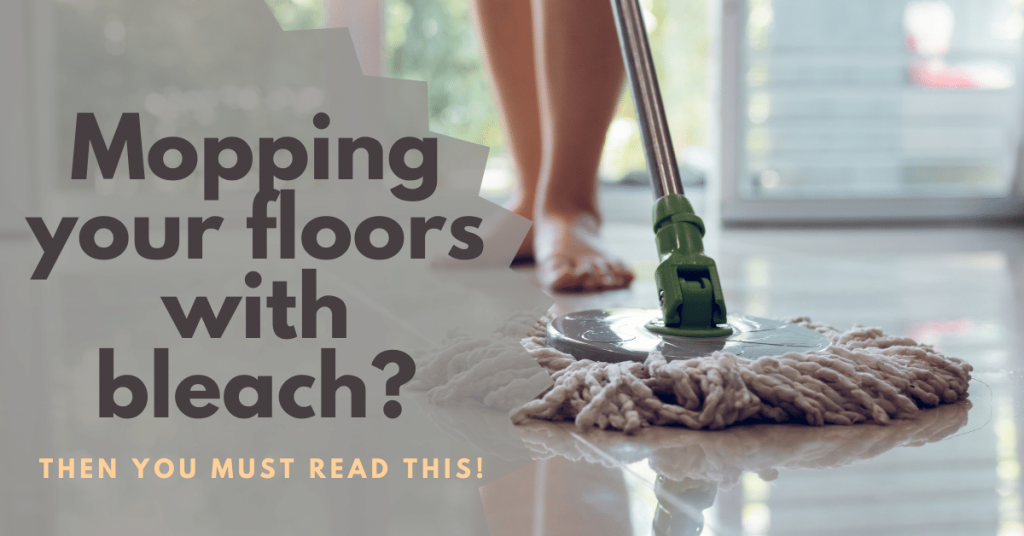
Different Floors May Require Different Cleaning Methods
There are many sorts of floors, which implies there are varied cleaning methods for each type of floor. That is why you should be aware of the type of flooring you have in your home and the best cleaning method for it. For that, you can use the bleach cleaning recommendations in the following list as a guide.
1. Carpet flooring
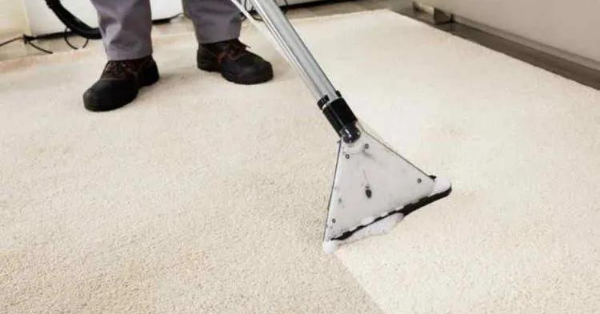
First and foremost, if your carpet is contains wool, you should not use bleach on it. Also, if you let bleach contact with vibrant rugs and carpets, you will witness the fading of colors.
White carpets that aren’t made of wool function best with bleach.
Here are two of my recommendations: [amazon link=”B07FJPWZR” title=”RMR-141 Disinfectant and Cleaner”/] and [amazon link=”B00EP9B42A” title=”Eco-me Concentrated Multi-Surface and Floor Cleaner”/]:
[amazon box=”B07FJPWZRF”]
[amazon box=”B00EP9B42A”]
PRO TIP!
Remember to use your protective gloves and mask while using chemicals! Bleach solution can burn your skin, and the gases it produces might be harmful to your respiratory system.
Bleach should never be applied directly to the carpet. To clean your rugs with bleach, mix a cup of bleach with a gallon of water to make a safe cleaning solution. To make the cleaning process easier, you can combine the ingredients in a spray bottle.
WARNING
Make sure the bleach doesn’t come into contact with any other chemicals you’ve used to remove stains. This is critical since combining bleach with the incorrect chemical, such as ammonia, can result in lethal fumes.
Instead of only spraying the stained region, you should spray the bleaching solution all over the carpet’s surface. After rinsing, the color will be more uniformly distributed. Leave your carpet in this state for half an hour.
Steam cleaning is a great alternative for quick cleaning any carpet material. They are usually affordable, do not require the use of toxic chemicals, and are lightweight and portable.
If you’re interested in getting a steam cleaner and don’t know where to get advice, don’t worry! Here is one of our amazing posts about carpet steam cleaners!
The Best 5 Carpet Steam Cleaners That Are a Proven Success!
Want to buy the best carpet steam cleaner? In this guide, we review the most versatile, the best for allergy sufferers, the best professional, the best budget, and the best rated.
2. Vinyl plank flooring
You’ll want to maintain the freshness of your luxury vinyl plank floors. You also would want to clean them once they’ve been installed, but you could be unsure how to do so. While luxury vinyl flooring is simple to maintain, it’s crucial to know how to clean it properly to ensure its longevity.
It’s crucial to remember that you shouldn’t use bleach, ammonia, or any other high-pH detergents to clean your luxury vinyl flooring. These cleansers are caustic, and they may cause harm to your floors.
Instead, search for cleansers that are pH-neutral. In fact, a basic solution of an ounce of mild dishwashing soap in a gallon of plain water is one of the best cleaners for vinyl floors.
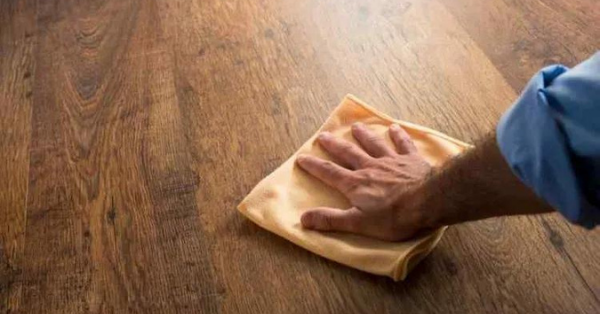
PRO TIP
Apple cider vinegar is a great cleaner for vinyl floors. Vinegar’s acidity may eliminate dirt and filth without leaving behind buildup and residue, like soap would. Just make sure you’re not cleaning your floors with full-strength vinegar. It can dull the sheen, and there’s no way to restore the lustre on vinyl flooring once that happens.
3. Slate flooring
Slate is a prominent building material that can be found in fireplace surrounds, flooring, worktops, and backsplashes, as well as outdoor walks and walls.
Even if your slate doesn’t appear dirty, it’s important to clean it with water and mild detergent every two or three months to avoid grime buildup and stains. Because slate is porous (prone to absorbing moisture and stains), it becomes obvious that using bleach is not a good method of cleaning since it can make the slate floor look worse and damage it.
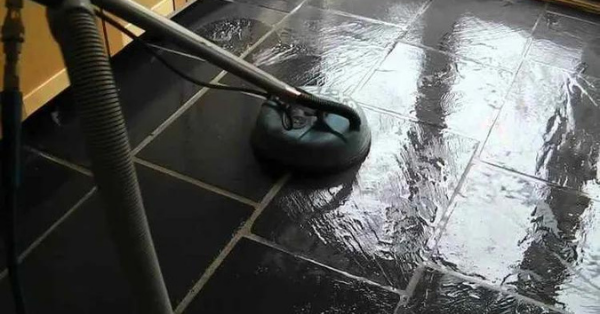
It’s best to protect it using a stone-and-tile sealer, which can be found at larger hardware stores or tile suppliers.
Steps for regular and deep cleaning of slate flooring.
- Remove any loose dirt from the surface by sweeping, dusting, or dry mopping it.
- In a quarter cup of warm water, add a few drops of mild dish detergent.
- Rub filth and grime away using a soft rag (or mop) soaked in the soap solution.
- Allow the surface to air-dry overnight after drying it with a towel.
- Clean the slate as usual, but once it’s dry, use a soft cloth to apply a thin coat of teak oil to the slate. Teak oil is inexpensive and can be found in most big hardware stores. Slate oil is also effective.
Here is one awesome cleaner that you can rely on to meet your slate floor cleaning needs: [amazon link=”B0044FX4LO” title=”Stone & Tile Intensive Cleaner”/]!
[amazon box=”B0044FX4LO”]
4. Hardwood flooring
There are many varieties of hardwood floors, each with its unique aesthetics, natural color, and strength. The Janka Hardness Rating is a method of determining the strength of wood.
There are many different viewpoints on whether to use bleach on hardwood floors, but when it comes to preserving the beauty of hardwood, I recommend avoiding bleach.
Bleach is a caustic substance that can harm hardwood flooring. It could happen right away or over time, but the chemical constitution of the substance breaks down and changes the color of materials like wood.
Some points on why bleach is not ideal for hardwood flooring.
- It has the ability to change the color of your floors.
- It can eat away at the finish, allowing water to seep through.
- It has the potential to create damage that will necessitate professional assistance at a great expense.
- It has the potential to weaken the wood.
Some recommendations on cleaning of hardwood floors instead of bleach.
- Use the manufacturer’s guide to understand the best practices for its cleaning.
- Use water and mild soap.
- Use cleaning products that aren’t made with lemon juice or vinegar (unless significantly diluted).
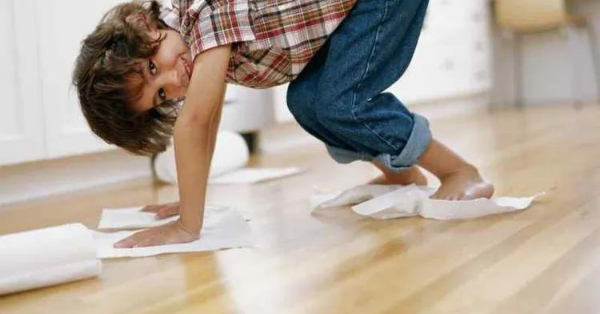
5. Linoleum flooring
Linoleum is durable, affordable and stain resistant. It is mostly preferred in the kitchen and hallways. It is good for high traffic areas because it can sustain spills and stains very good.
Linoleum is composed of ground cork dust, pine rosin, wood flour, mineral fillers.
Most types of linoleum flooring are safe to use with bleach, however it is not advisable to apply the bleach directly to the surface. If you must use a solution to clean the linoleum floor with bleach, dilute it with water.
In a large bucket, combine 3/4 cup bleach with one gallon or 3.5 kilograms of water to make a solution. Mix the solution thoroughly to ensure that the bleach is completely dissolved in the liquid. Start sweeping the floor with a mop that has been soaked in the bucket. Allow at least five minutes for the solution to sit on the linoleum floor for the bleach to begin dissolving the dust and filth.
After the waiting period has passed, rinse the floor with clean water to remove the solution.
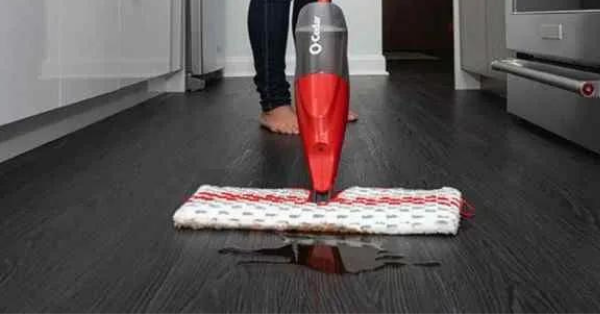
Conclusion
Try a store-bought cleaning spray or wipe (like Lysol) that contains the chemical Alkyl Benzyl Ammonium Chloride to effectively disinfect your flooring without the risk of harming them. It’s a good idea to test a small area first to ensure that the product or chemical you’re using won’t harm your flooring. The coronavirus can stay on the bottoms of shoes, according to experts, so it’s a good idea to be extra cautious.
Sure, you’ll have to put in a little extra effort to disinfect your flooring, which might be inconvenient. If you want to retain the beauty of your wood floors and woolen carpets, avoid strong chemicals like bleach. Consider how bleach changes the color of your hair or clothing; it might do the same to your wood. While bleach can certainly disinfect porous surfaces, you risk harming the wood or finish by discoloring it or getting into the wood itself and causing harm.
For more tips on cleaning of carpets, I highly recommend reading this insightful post that will inform you of carpet cleaning tips from a professional

